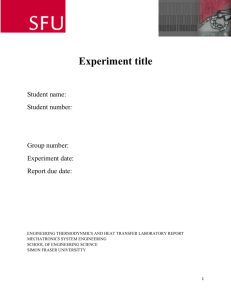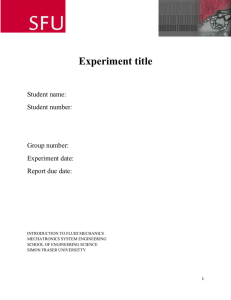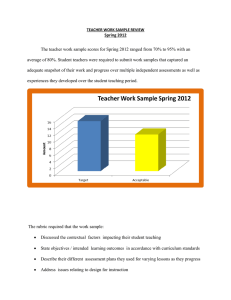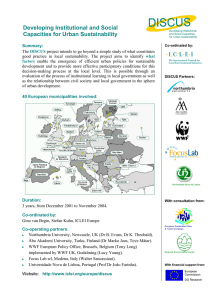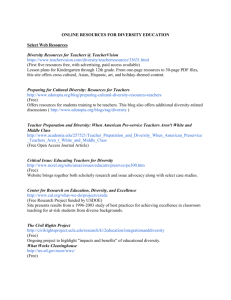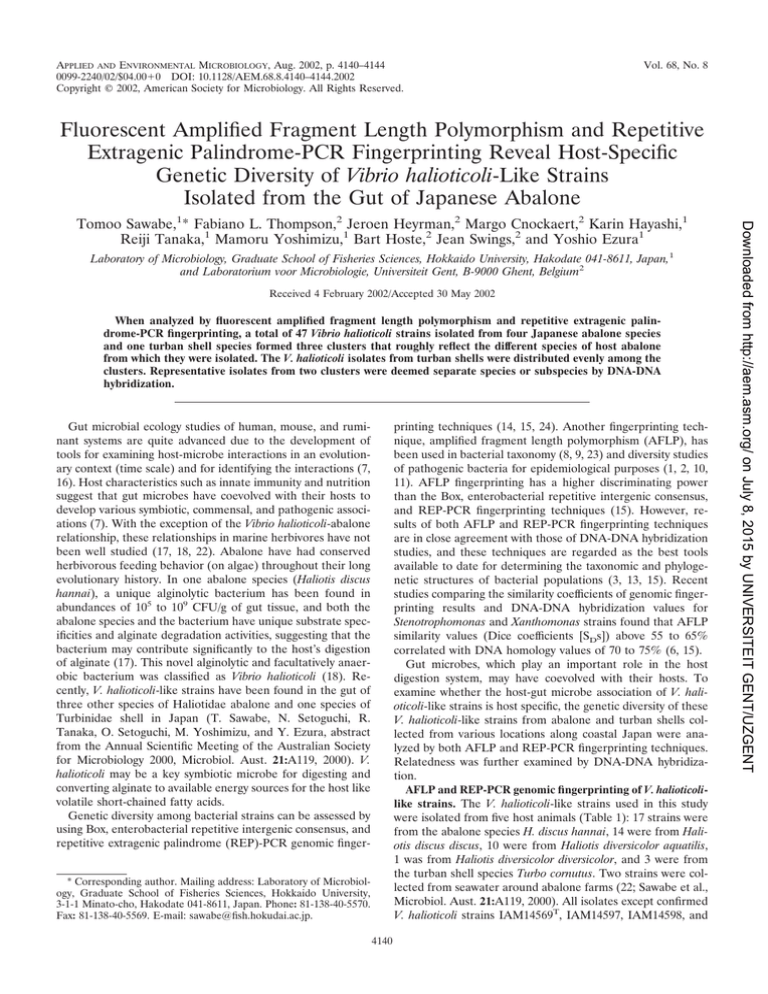
APPLIED AND ENVIRONMENTAL MICROBIOLOGY, Aug. 2002, p. 4140–4144
0099-2240/02/$04.00⫹0 DOI: 10.1128/AEM.68.8.4140–4144.2002
Copyright © 2002, American Society for Microbiology. All Rights Reserved.
Vol. 68, No. 8
Fluorescent Amplified Fragment Length Polymorphism and Repetitive
Extragenic Palindrome-PCR Fingerprinting Reveal Host-Specific
Genetic Diversity of Vibrio halioticoli-Like Strains
Isolated from the Gut of Japanese Abalone
Laboratory of Microbiology, Graduate School of Fisheries Sciences, Hokkaido University, Hakodate 041-8611, Japan,1
and Laboratorium voor Microbiologie, Universiteit Gent, B-9000 Ghent, Belgium2
Received 4 February 2002/Accepted 30 May 2002
When analyzed by fluorescent amplified fragment length polymorphism and repetitive extragenic palindrome-PCR fingerprinting, a total of 47 Vibrio halioticoli strains isolated from four Japanese abalone species
and one turban shell species formed three clusters that roughly reflect the different species of host abalone
from which they were isolated. The V. halioticoli isolates from turban shells were distributed evenly among the
clusters. Representative isolates from two clusters were deemed separate species or subspecies by DNA-DNA
hybridization.
printing techniques (14, 15, 24). Another fingerprinting technique, amplified fragment length polymorphism (AFLP), has
been used in bacterial taxonomy (8, 9, 23) and diversity studies
of pathogenic bacteria for epidemiological purposes (1, 2, 10,
11). AFLP fingerprinting has a higher discriminating power
than the Box, enterobacterial repetitive intergenic consensus,
and REP-PCR fingerprinting techniques (15). However, results of both AFLP and REP-PCR fingerprinting techniques
are in close agreement with those of DNA-DNA hybridization
studies, and these techniques are regarded as the best tools
available to date for determining the taxonomic and phylogenetic structures of bacterial populations (3, 13, 15). Recent
studies comparing the similarity coefficients of genomic fingerprinting results and DNA-DNA hybridization values for
Stenotrophomonas and Xanthomonas strains found that AFLP
similarity values (Dice coefficients [SDs]) above 55 to 65%
correlated with DNA homology values of 70 to 75% (6, 15).
Gut microbes, which play an important role in the host
digestion system, may have coevolved with their hosts. To
examine whether the host-gut microbe association of V. halioticoli-like strains is host specific, the genetic diversity of these
V. halioticoli-like strains from abalone and turban shells collected from various locations along coastal Japan were analyzed by both AFLP and REP-PCR fingerprinting techniques.
Relatedness was further examined by DNA-DNA hybridization.
AFLP and REP-PCR genomic fingerprinting of V. halioticolilike strains. The V. halioticoli-like strains used in this study
were isolated from five host animals (Table 1): 17 strains were
from the abalone species H. discus hannai, 14 were from Haliotis discus discus, 10 were from Haliotis diversicolor aquatilis,
1 was from Haliotis diversicolor diversicolor, and 3 were from
the turban shell species Turbo cornutus. Two strains were collected from seawater around abalone farms (22; Sawabe et al.,
Microbiol. Aust. 21:A119, 2000). All isolates except confirmed
V. halioticoli strains IAM14569T, IAM14597, IAM14598, and
Gut microbial ecology studies of human, mouse, and ruminant systems are quite advanced due to the development of
tools for examining host-microbe interactions in an evolutionary context (time scale) and for identifying the interactions (7,
16). Host characteristics such as innate immunity and nutrition
suggest that gut microbes have coevolved with their hosts to
develop various symbiotic, commensal, and pathogenic associations (7). With the exception of the Vibrio halioticoli-abalone
relationship, these relationships in marine herbivores have not
been well studied (17, 18, 22). Abalone have had conserved
herbivorous feeding behavior (on algae) throughout their long
evolutionary history. In one abalone species (Haliotis discus
hannai), a unique alginolytic bacterium has been found in
abundances of 105 to 109 CFU/g of gut tissue, and both the
abalone species and the bacterium have unique substrate specificities and alginate degradation activities, suggesting that the
bacterium may contribute significantly to the host’s digestion
of alginate (17). This novel alginolytic and facultatively anaerobic bacterium was classified as Vibrio halioticoli (18). Recently, V. halioticoli-like strains have been found in the gut of
three other species of Haliotidae abalone and one species of
Turbinidae shell in Japan (T. Sawabe, N. Setoguchi, R.
Tanaka, O. Setoguchi, M. Yoshimizu, and Y. Ezura, abstract
from the Annual Scientific Meeting of the Australian Society
for Microbiology 2000, Microbiol. Aust. 21:A119, 2000). V.
halioticoli may be a key symbiotic microbe for digesting and
converting alginate to available energy sources for the host like
volatile short-chained fatty acids.
Genetic diversity among bacterial strains can be assessed by
using Box, enterobacterial repetitive intergenic consensus, and
repetitive extragenic palindrome (REP)-PCR genomic finger* Corresponding author. Mailing address: Laboratory of Microbiology, Graduate School of Fisheries Sciences, Hokkaido University,
3-1-1 Minato-cho, Hakodate 041-8611, Japan. Phone: 81-138-40-5570.
Fax: 81-138-40-5569. E-mail: sawabe@fish.hokudai.ac.jp.
4140
Downloaded from http://aem.asm.org/ on July 8, 2015 by UNIVERSITEIT GENT/UZGENT
Tomoo Sawabe,1* Fabiano L. Thompson,2 Jeroen Heyrman,2 Margo Cnockaert,2 Karin Hayashi,1
Reiji Tanaka,1 Mamoru Yoshimizu,1 Bart Hoste,2 Jean Swings,2 and Yoshio Ezura1
GENETIC DIVERSITY OF VIBRIO HALIOTICOLI STRAINS
VOL. 68, 2002
4141
TABLE 1. V. halioticoli-like strains used for fingerprinting analysis
Host animal of isolateb
Species
Date collected
Place of collectionc
Statusd
IAM 14596
IAM 14597
IAM 14598
IAM 14599
1Y2-20
1Y2-26 (LMG19964)
2Y1-13 (LMG19965)
2Y2-23
25Y1-10
25Y2-25
KN1Y1-9
KN1Y2-9
KL1Y1-12
KL1Y1-18
KL1Y2-10
KLA1Y1-10
KLA1Y2-23
HDD1-1 (LMG19972)
HDD1-2
HDD2-1 (LMG19971)
HDD2-2
HDD3-1 (LMG19973)
HDD3-2
HDD4-1 (LMG19974)
HDD4-2
HDD5-1 (LMG19975)
HDD5-2
HDD6-1 (LMG19977)
HDD6-2 (LMG19976)
HDD7-1
HDD7-2 (LMG19978)
HDS1-1 (LMG19970)
HDS1-2
HDS2-1 (LMG19969)
HDS2-2
HDS3-1 (LMG19968)
HDS3-2
HDS4-1 (LMG19967)
HDS4-2
HDS5-1 (LMG19966)
HDS5-2
HDV1-1 (LMG19979)
TC2-1
TC2-3
TC4-2 (LMG19963)
KSW-5
COSW-2
H. discus hannai
H. discus hannai
H. discus hannai
H. discus hannai
H. discus hannai
H. discus hannai
H. discus hannai
H. discus hannai
H. discus hannai
H. discus hannai
H. discus hannai
H. discus hannai
H. discus hannai
H. discus hannai
H. discus hannai
H. discus hannai
H. discus hannai
H. discus discus
H. discus discus
H. discus discus
H. discus discus
H. discus discus
H. discus discus
H. discus discus
H. discus discus
H. discus discus
H. discus discus
H. discus discus
H. discus discus
H. discus discus
H. discus discus
H. diversicolor aquatilis
H. diversicolor aquatilis
H. diversicolor aquatilis
H. diversicolor aquatilis
H. diversicolor aquatilis
H. diversicolor aquatilis
H. diversicolor aquatilis
H. diversicolor aquatilis
H. diversicolor aquatilis
H. diversicolor aquatilis
H. diversicolor diversicolor
T. cornutus
T. cornutus
T. cornutus
Seawater
Seawater
July 1991
Apr. 1993
Jan. 1994
Jan. 1994
May 1997
May 1997
May 1997
May 1998
May 1997
May 1997
July 1997
July 1997
July 1997
July 1997
July 1997
July 1997
July 1997
July 1999
July 1999
July 1999
July 1999
July 1999
July 1999
July 1999
July 1999
July 1999
July 1999
Dec. 1999
Dec. 1999
Dec. 1999
Dec. 1999
July 1999
July 1999
July 1999
July 1999
July 1999
July 1999
July 1999
July 1999
July 1999
July 1999
Dec. 1999
Dec. 1999
Dec. 1999
Dec. 1999
May 1997
July 1999
Kumaishi
Taisei
Shiriuchi
Shiriuchi
Kumaishi
Kumaishi
Kumaishi
Kumaishi
Kumaishi
Kumaishi
Ofunato
Ofunato
Ofunato
Ofunato
Ofunato
Ofunato
Ofunato
Kanagawa
Kanagawa
Kanagawa
Kanagawa
Kanagawa
Kanagawa
Kanagawa
Kanagawa
Kanagawa
Kanagawa
Izu Ohshima
Izu Ohshima
Izu Ohshima
Izu Ohshima
Kanagawa
Kanagawa
Kanagawa
Kanagawa
Kanagawa
Kanagawa
Kanagawa
Kanagawa
Kanagawa
Kanagawa
Izu Ohshima
Izu Ohshima
Izu Ohshima
Izu Ohshima
Kumaishi
Kumaishi
Cultured
Cultured
Cultured
Cultured
Cultured
Cultured
Cultured
Cultured
Cultured
Cultured
Cultured
Cultured
Cultured
Cultured
Cultured
Cultured
Cultured
Cultured
Cultured
Cultured
Cultured
Cultured
Cultured
Cultured
Cultured
Cultured
Cultured
Cultured
Cultured
Wild
Wild
Cultured
Cultured
Cultured
Cultured
Cultured
Cultured
Cultured
Cultured
Cultured
Cultured
Wild
Wild
Wild
Cultured
a
LMG, BCCMTM/LMG Bacteria Collection, Laboratorium voor Microbiologie, Gent Universitiet, Ghent, Belgium; IAM, Institute of Applied Microbiology, Tokyo
University, Tokyo, Japan.
b
All isolates were from host animals, except for KSW-5 and COSW-2, which were isolated from seawater.
c
Kumaishi, Taisei, and Shiriuchi are located in Hokkaido, Japan; Ofunato is located in Iwate Prefecture, Japan; Kanagawa is located in Kanagawa Prefecture, Japan;
and Izu Ohshima is located in Tokyo, Japan.
d
Cultured, abalone farmed and cultured using artificial fertilization; wild, abalone caught in the wild.
IAM14599 (18) were identified as V. halioticoli-like by using
V. halioticoli-specific colony hybridization (21) and 16S ribosomal DNA PCR/restriction fragment length polymorphism
analysis (20). Isolates used for fingerprint analysis were geographically distributed in Japan as follows: H. discus hannai
isolates from the three Hokkaido sites and one Iwate site were
500 km apart, and H. discus discus isolates from Kanagawa and
Izu Ohshima were 100 km apart (Table 1). All strains were
maintained on ZoBell 2216E agar containing 0.5% sodium
alginate (17).
Cells used for DNA extraction were cultured in ZoBell
2216E broth at 25°C for 24 h, harvested, and extracted with a
Promega (Madison, Wis.) Wizard genomic DNA extraction kit
according to the manufacturer’s instructions.
Fluorescent AFLP patterns of the 47 strains were generated
and analyzed as described previously (23). Briefly, 1 g of highmolecular-weight DNA was digested with TaqI and HindIII,
followed by ligation of restriction half-site-specific adapters,
and amplified by performing PCR twice with primers H00/T00
and H01-6FAM/T03 (9). PCR products were separated on
Downloaded from http://aem.asm.org/ on July 8, 2015 by UNIVERSITEIT GENT/UZGENT
V. halioticoli strain
(synonym)a
4142
SAWABE ET AL.
FIG. 1. Dice coefficient-Ward algorithm cluster analysis of AFLP
fingerprinting patterns of V. halioticoli-like strains isolated from the
gut of Japanese abalone, turban shell, or seawater from abalone farms.
criteria for the grouping of the V. halioticoli-like strains by both
fingerprinting techniques appears to be the abalone host species from which the strains were isolated.
V. halioticoli-like isolates from abalone were divided into
three clusters by both AFLP and REP-PCR fingerprinting
analyses based on their abalone host species. However, V.
halioticoli-like strains from turban shells were not grouped in a
single cluster (Fig. 1 and 2). In fact, the nearest neighbors of
isolates TC2-1 and TC2-3 from wild turban shells were wild
abalone isolates HDV1-1 (from H. diversicolor diversicolor) and
HDD7-1 (from H. discus discus), with 79.4 and 73.4% SDs,
respectively, by the AFLP analysis (Fig. 1). Alternatively, the
host species of strain TC4-2 was cultured at Izu Oshima, and
the nearest neighbors of TC4-2 were isolates from H. discus
Downloaded from http://aem.asm.org/ on July 8, 2015 by UNIVERSITEIT GENT/UZGENT
36-cm denaturing polyacrylamide gels on an ABI Prism 377
DNA sequencer (Applied Biosystems, Foster City, Calif.).
GeneScan 3.1 software (Applied Biosystems) was used to track
and normalize the lanes. Tables of data from normalized peaks
containing fragments of 50 to 536 bp were transferred into
BioNumerics 2.0 software (Applied Maths, Sint-MartensLatem, Belgium) for numerical analysis. Clustering of the patterns was done by use of the Dice coefficient (SD) and the
Ward algorithm (19).
REP-PCR fingerprinting was performed using the PCR conditions described previously by Rademaker et al. (14) and
reaction mixtures containing 1 l of DNA (50 ng l⫺1), 5 l of
5⫻ Gitschier buffer (14), 0.4 l of bovine serum albumin (10
mg ml⫺1), 2.5 l of dimethyl sulfoxide (10 mg ml⫺1), 1.25 l of
a deoxynucleoside triphosphate mixture (100 mM each deoxynucleoside triphosphate), 1 l of GTG5 primer (0.3 g
l⫺1; Amersham Pharmacia Biotech, Uppsala, Sweden) (24),
and 0.4 l of Taq DNA polymerase (5 U l⫺1; Goldstar Red).
PCR products were separated on a 1.5% (wt/vol) agarose gel
with TAE buffer [1.21 g of Tris 2-amino-2 (hydroxymethyl)1,3-propandiol liter⫺1, 0.2 ml of 0.5 M EDTA liter⫺1 (pH 8)]
at a constant voltage of 55 V for 900 min at 4°C. Molecular
markers (45.5% [vol/vol] 100-bp ruler; 36.5% [vol/vol] 500-bp
ruler, and 18% [vol/vol] loading buffer) were loaded in the first
and every sixth lane. After the gels were stained with ethidium
bromide, the visualized patterns were digitalized. Normalization, recognition, and assignment of bands on the gel were
performed using BioNumerics software (Applied Maths), and
a dendrogram based on the Pearson similarity coefficient (␥)
was constructed(5).
AFLP analysis grouped the 47 V. halioticoli-like strains into
three main clusters (Fig. 1). Cluster 1 (SD, 48.6%) included the
four V. halioticoli type strains, all V. halioticoli-like strains isolated from H. discus hannai, two isolates from seawater from
abalone farms, one isolate (TC4-2 [⫽LMG19963]) from T.
cornutus, and four isolates (HDD4-1 [⫽LMG19974], HDD4-2,
HDD5-1 [⫽LMG19975], and HDD5-2) from H. discus discus.
Cluster 2 (SD, 54.6%) included 10 isolates from H. discus discus
and 1 isolate (TC2-3) from T. cornutus. Cluster 3 (SD, 54.6%)
included all isolates from H. diversicolor aquatilis and H. diversicolor diversicolor and isolate TC2-1 from T. cornutus. The low
SDs (⬍20%) among these three groups indicate that they consist of isolates with divergent genomes (Fig. 1).
REP-PCR fingerprinting of these 47 strains resulted in a
delineation of the three main clusters identical to the AFLP
grouping (Fig. 2.). V. halioticoli-like strains grouped in the
same clusters according to their host abalone species, except
for the rearrangement within cluster 1 of isolates HDD4-1
(⫽LMG19974), HDD4-2, HDD5-1 (⫽LMG19975), and HDD52. As with the AFLP clustering, isolates from seawater and T.
cornutus were found in the same clusters. Clusters 1, 2, and 3
had inner r values of 48.7, 60.6, and 59.0%, respectively, and
the r value among the clusters was lower than 45%. The correlation between the fluorescent AFLP and REP-PCR groupings was found to be high. In addition, differences in geographical distribution, for example, of the strains from H. discus
hannai from Hokkaido and Iwate and of the strains from H.
discus discus from Kanagawa and Izu Ohisima, were not found
to be distinct subgroups by either AFLP fingerprinting or REPPCR fingerprinting analysis (Fig. 1 and 2). Therefore, the only
APPL. ENVIRON. MICROBIOL.
VOL. 68, 2002
GENETIC DIVERSITY OF VIBRIO HALIOTICOLI STRAINS
4143
hannai (Fig. 1). These data lead to the hypothesis that V.
halioticoli-like isolates can be taken up into the gut of turban
shells without strong specificity in the symbiotic associations
between V. halioticoli and their turban shell hosts. Rather low
populations (below 20%) of V. halioticoli-like strains in the gut
of the turban shell (unpublished data) compared to the abundant populations (40 to 60%) in the gut of abalone suggests a
transient or neutral relationship between turban shells and the
bacterium.
Results of DNA-DNA hybridization experiments with representative V. halioticoli-like strains divide into the fingerprinting clusters. In our study, AFLP fingerprinting similarities
(measured as SDs) between cluster 1, which includes the V.
halioticoli type strains, and the other groups and those between
cluster 2 and cluster 3 were below 20%. DNA-DNA hybridization experiments were performed with microdilution wells by a
fluorometric direct binding methodology as previously described (4, 18). DNAs of V. halioticoli IAM14596T (representative of AFLP cluster 1), HDD3-1 (representative of AFLP
cluster 2), and HDS1-1 (representative of AFLP cluster 3)
were labeled with photobiotin (Vector Laboratories, Burlingame, Calif.). Unlabeled single-stranded DNA from each of
these strains was immobilized in microdilution wells (Immuron
200, FIA/LIA plate, black type; Greiner Labotechnik, Frichenhausen, Germany). Hybridization was performed at 45°C (18).
DNA-DNA relatedness levels between the biotinylated
strain IAM14596T and unlabeled strains HDD3-1 and HDS1-1
were 97 and 70%, respectively (Table 2). However, the DNA
relatedness values between labeled HDD3-1 and HDS1-1 and
the other unlabeled strains were all below 70% (Table 2). The
results indicate that isolates belonging to AFLP clusters 2 and
3 (HDD3-1 and HDS1-1, respectively) can be defined as a
Downloaded from http://aem.asm.org/ on July 8, 2015 by UNIVERSITEIT GENT/UZGENT
FIG. 2. Cluster analysis by the Pearson unweighted-pair group method using average linkages of the REP-PCR fingerprinting patterns of V.
halioticoli-like strains isolated from the gut of Japanese abalone, turban shell, or seawater from abalone farms.
4144
SAWABE ET AL.
APPL. ENVIRON. MICROBIOL.
TABLE 2. DNA relatedness among V. halioticoli
and related isolates
AFLP
cluster
Strain
T
IAM14596
HDD3-1
HDS1-1
1
2
3
DNA relatedness (%) with biotinylated
DNA from:
6.
IAM14596T
HDD3-1
HDS1-1
7.
100
97
70
43
100
48
32
67
100
8.
10.
11.
12.
13.
14.
15.
16.
17.
18.
This work was supported by a Grant-in-Aid for Scientific Research
(no. 09460081) from the Ministry of Education, Science and Culture of
Japan. F.L.T. has a Ph.D. scholarship (no. 2008361/98-6) from Conselho Nacional de Desenvolvimento Científico e Tecnológico (CNPq),
Brasilia, Brazil.
We thank Johan Vandenberghe for useful comments.
19.
REFERENCES
21.
1. Duim, B., T. M. Wassenaar, A. Rigter, and Wagenaar, J. 1999. High-resolution genotyping of Campylobacter strains isolated from poultry and humans
with amplified fragment length polymorphism fingerprinting. Appl. Environ.
Microbiol. 65:2369–2375.
2. Duim, B., C. W. Ang, A. van Belkum, A. Rigter, N. W. J. van Leeuwen, H. P.
Endtz, and J. Wagenaar. 2000. Amplified fragment length polymorphism
analysis of Campylobacter jejuni strains isolated from chickens and from
patients with gastroenteritis or Guillain-Barré or Miller Fisher syndrome.
Appl. Environ. Microbiol. 66:3917–3923.
3. Duim, B., P. A. R. Vandamme, A. Rigter, S. Laevens, J. R. Dijkstra, and J. A.
Wagenaar. 2001. Differentiation of Campylobacter species by AFLP fingerprinting. Microbiology 147:2729–2737.
4. Ezaki, T., Y. Hashimoto, N. Takeuchi, H. Yamamoto, S.-L. Liu, H. Miura, K.
Matsui, and E. Yabuuchi. 1988. Simple genetic method to identify viridans
group Streptococci by colorimetric dot hybridization and fluorometric hybridization in microdilution wells. J. Clin. Microbiol. 26:1708–1713.
5. Häne, B. G., K. Jäger, and H. G. Drexler. 1983. The Pearson product-
20.
22.
23.
24.
25.
Downloaded from http://aem.asm.org/ on July 8, 2015 by UNIVERSITEIT GENT/UZGENT
species or subspecies that is distinct from authentic V. halioticoli by using a DNA relatedness of greater than 70% as the
criterion for defining a bacterial species(25).
Conclusion. The genomic fingerprinting analysis reveals that
host-driven (or host-dependent) DNA polymorphism rather
than geographical or environmental factors accounts for the
groupings observed in the V. halioticoli-like strains isolated
from Japanese abalone (Fig. 1 and 2). Furthermore, cospeciation of V. halioticoli-related species and Japanese abalone may
have occurred (Table 2). There are, however, about 70 abalone
species in the world that populate coastal areas along France,
South Africa, Australia, New Zealand, United States, and Taiwan. In the one regional example described in the present
report, we have shown the strong role of host species specificity
in the abalone-gut microbe relationship.
One proposed ancestral abalone species (Haliotis iris, a New
Zealand species) split into two main lineages according to
molecular phylogenetic analysis using a sequence of abalone
sperm lysine and morphological comparisons to the oldest
abalone fossil records (12). A study of the distribution of the
gut microbe V. halioticoli or related species in modern abalone
species should be conducted to clarify the coevolution of abalone and V. halioticoli.
9.
moment correlation coefficient is better suited for identification of DNA
fingerprint profiles than band matching algorithms. Electrophoresis 14:967–
972.
Hauben, L., L. Vauterin, E. R. B. Moore, B. Hoste, and J. Swings. 1999.
Genomic diversity of the genus Stenotrophomonas. Int. J. Syst. Bacteriol.
49:1749–1760.
Hooper, L. K., and J. I. Gordon. 2001. Commensal host-bacterial relationships in the gut. Science 292:1115–1118.
Huys, G., R. Coopman, P. Janssen, and K. Kersters. 1996. High-resolution
genotypic analysis of the genus Aeromonas by AFLP fingerprinting. Int. J.
Syst. Bacteriol. 46:572–580.
Janssen, P., R. Coopman, G. Huys, J. Swings, M. Bleeker, P. Vos, M.
Zabeau, and K. Kersters. 1996. Evaluation of the DNA fingerprinting
method AFLP as a new tool in bacterial taxonomy. Microbiology 142:1881–
1893.
Jiang, S. C., V. Louis, N. Choopun, A. Sharma, A. Huq, and R. R. Colwell.
2000. Genetic diversity of Vibrio cholerae in Chesapeake Bay determined by
amplified fragment length polymorphism fingerprinting. Appl. Environ. Microbiol. 66:140–147.
Jiang, S. C., M. Matte, G. Matte, A. Huq, and R. R. Colwell. 2000. Genetic
diversity of clinical and environmental isolates of Vibrio cholerae determined
by amplified fragment length polymorphism fingerprinting. Appl. Environ.
Microbiol. 66:148–153.
Lee, Y.-H., and V. D. Vacquire. 1995. Evolution and systematics in Haliotidae
(Mollusca: Gastropoda): inferences from DNA sequences of sperm lysine.
Mar. Biol. 124:267–278.
Nick, G., M. Jusilla, B. Hoste, R. M. Niemi, S. Kaijalainen, R. de Lajudie, M.
Gillis, F. J. de Bruijn, and K. Lindström. 1999. Rhizobia isolated from root
nodules of tropical leguminous trees characterized using DNA-DNA dotblot hybridization and rep-PCR genomic fingerprinting. Syst. Appl. Microbiol. 22:287–299.
Rademaker, J. L. W., F. J. Louws, and F. J. de Brujin. 1998. Characterization
of the diversity of ecologically important microbes by rep-PCR genomic
fingerprinting, p. 1–27. In J. D. Van Elsas et al. (ed.), Molecular microbial
ecology manual, vol. 3.4.3. Kluwer Academic Publishers, Dordrecht, The
Netherlands.
Rademaker, J. L. W., B. Hoste, F. J. Louws, K. Kersters, J. Swings, L.
Vauterin, P. Vauterin, and F. J. de Brujin. 2000. Comparison of AFLP and
rep-PCR genomic fingerprinting with DNA-DNA homology studies: Xanthomonas as a model system. Int. J. Syst. Evol. Microbiol. 50:665–677.
Russel, J. B., and J. L. Rychlik. 2001. Factors that alter rumen microbial
ecology. Science 292:1119–1122.
Sawabe, T., Y. Oda, Y. Shiomi, and Y. Ezura. 1995. Alginate degradation by
bacteria isolated from the gut of sea urchins and abalones. Microb. Ecol.
30:192–202.
Sawabe, T., I. Sugimura, M. Ohtsuka, K. Nakano, K. Tajima, Y. Ezura, and
R. Christen. 1998. Vibrio halioticoli sp. nov., a nonmotile alginolytic marine
bacterium isolated from the gut of abalone Haliotis discus hannai. Int. J. Syst.
Bacteriol. 48:573–580.
Sneath, P. H. A., and R. R. Sokal. 1973. Numerical taxonomy. W. H. Freeman and Company, San Francisco, Calif.
Tanaka, R., T. Sawabe, K. Tajima, J. Vandenberghe, and Y. Ezura. 2001.
Identification of Vibrio halioticoli using 16S rDNA PCR/RFLP (restriction
fragment length polymorphism) analysis. Fish. Sci. (Tokyo) 67:185–187.
Tanaka, R., M. Ootsubo, T. Sawabe, K. Tajima, J. Vandenberghe, and Y.
Ezura. 2002. Identification of Vibrio halioticoli by colony hybridization with
non-radioisotope labeled genomic DNA. Fish. Sci. (Tokyo) 68:227–229.
Tanaka, R., T. Sawabe, M. Yoshimizu, and Y. Ezura. 2002. Distribution of
Vibrio halioticoli around an abalone farming center in Japan. Microb. Environ. 17:6–9.
Thompson, F. L., B. Hoste, K. Vandemeulebroecke, and J. Swings. 2002.
Genomic diversity amongst Vibrio isolates from different sources determined
by fluorescent amplified fragment length polymorphism. Syst. Appl. Microbiol. 24:520–538.
Versalovic, J., M. Schneider, F. J. de Brujin, and J. R. Lupski. 1994. Genomic fingerprinting of bacteria using repetitive sequence-based polymerase
chain reaction. Methods Mol. Cell. Biol. 5:25–40.
Wayne, L. G., D. J. Brenner, R. R. Colwell, P. A. D. Grimont, O. Kandler,
M. L. Krichevsky, L. H. Moore, W. E. C. Moore, R. G. E. Murray, E.
Stackebrandt, M. P. Starr, and H. G. Trüper. 1987. Report of the Ad Hoc
Committee on Reconciliation of Approaches to Bacterial Systematics. Int. J.
Syst. Bacteriol. 37:463–464.

